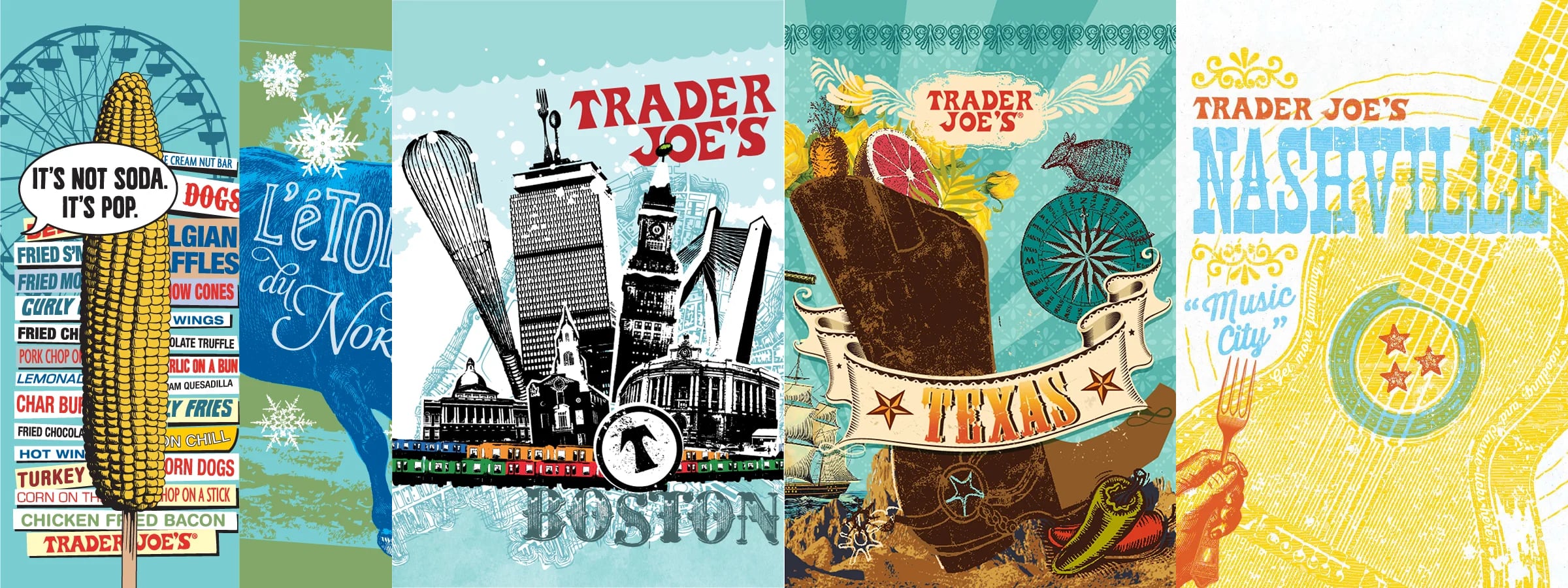At first glance, Trader Joe’s is illogical: Few choices, few brands, no ads or sales, small store. By the standards of traditional grocery chains like Walmart, Kroger, Albertson's, or Win-Dixie, the Trader Joe’s business model is a recipe for failure.
But Trader Joe’s is far from a failure. Small and mighty, “Trader Joe’s outsells all other grocery stores per square foot,” reports Stephen Dubner in the Freakonomic Radio podcast episode called, “Should America Be Run by … Trader Joe’s?”
The Genius of Choice Architecture
Stephen dives into the secrets of their success (the fun and artsy atmosphere, the strong customer focus, the adventure-filled shopping experience). But what fascinates me most is Trader Joe’s choice architecture – the deliberate way Trader Joe’s presents fewer options to shoppers in order to subtly guide their purchases. (That, and I really, really like their organic ginger turmeric herbal tea. And their peanut butter cups. I wasn’t so hot on the Irish Whiskey I picked up for St. Patrick’s day, though.)
You might say, “more choice is better.” I agree. The old Henry Ford joke about buying a Model T ("you can have any color you want, as long as it's black") isn’t particularly appealing. Even so, there’s a tipping point where too much choice leads to worse decisions.
Your Brain on Decisions
It’s called decision paralysis. You may know a version of it as “Netflix Syndrome:” the endless search to find something good to watch. You scroll, you flip, you click over and over until you’re overwhelmed by the hundreds of shows you’ve never heard of. When you finally make a decision there's often a lingering feeling of doubt or regret. ("What if I had chosen the other one?").
OK, so wasting time finding a movie to watch is one thing, decision paralysis in business can have significant consequences, leading to missed opportunities and misaligned needs. For businesses, giving customers (or internal stakeholders) too many options when prioritizing can backfire, leading to inaction. Consider the poor customer who stands in the grocery store aisle with dozens of brands of the same product (like toothpaste, cereal or coffee), each with slightly different features. They can have difficulty choosing and might end up buying nothing. Is that good for customer decision making? Buying nothing is bad for business.
Less is More Sales
Trader Joe’s learned this lesson well. Their business strategy aims to offer a curated selection of far fewer options in a particular category (also called a “low SKU environment”) to reduce the cognitive load on their shoppers. This focused approach reduces decision fatigue and makes purchasing easier. It's one of the keys to their success.
Just as Trader Joe's simplifies the overwhelming grocery landscape, pairLab reduces the complex process of product prioritization by focusing on direct comparisons. Recognizing that the simplest choice is between two things, pairLab presents options in focused pairs, minimizing cognitive overload. The result: clear, confident choices that truly reflect customer priorities. This leads to product development that aligns with actual needs, marketing campaigns that resonate and efficient resource allocation.
How to Find Priorities
Use pairLab’s principle of focused choice architecture to cut through the noise and identify what truly matters. Curious how a focused approach to decision-making can improve your business priorities? Explore how pairLab simplifies the process with a free trial.
